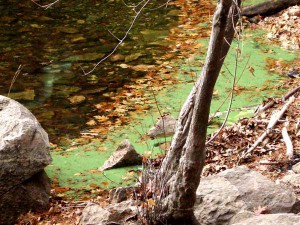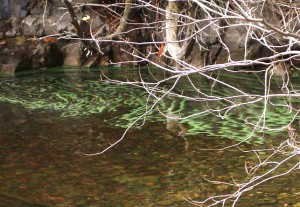 Blue-green algae are an ancient group of algae known as cyanobacteria. While closely related to bacteria, blue-green algae are capable of photosynthesis, like plants.
Blue-green algae are an ancient group of algae known as cyanobacteria. While closely related to bacteria, blue-green algae are capable of photosynthesis, like plants.
Problem
They reproduce rapidly in lakes and ponds in shallow water, with adequate amounts of sunlight, warm air and water temperatures, calm winds, and sufficient amounts of nutrients like phosphorus and nitrogen.
Some blue-green algae produce natural toxins. When these algae die and break down, toxins are released into the water. If animals or humans ingest the toxin, they can be quickly paralyzed and die.
Exposure symptoms may include: nausea diarrhea, or vomiting; irritation of skin, nose, throat, or eye; dizziness, headache, fever, liver damage, or nervous system damage.
Most blooms are not toxic, but if you encounter blue-green algae, treat it as if it could be toxic. Don’t let your pets or children play in the water.
Solutions
 This can be best done by reducing fertilizer usage (for lawns, gardens, and farms), and by eliminating residential, municipal, and agricultural wastewater discharge.
This can be best done by reducing fertilizer usage (for lawns, gardens, and farms), and by eliminating residential, municipal, and agricultural wastewater discharge.
The best solution to reduce the incidence of blue-green algae blooms is to reduce the amount of phosphorous and nitrogen that runs into the lake and rivers.
The Lake Champlain Land Trust is playing an essential role in helping reduce lake phosphorus and nitrogen levels. The wetlands, fields, forests, and shoreline that we conserve act as critical filters for nutrients and sediments, keeping them out of the Lake. Visit our programs page for more information about our water quality improvement efforts.
Want to know what you can do to help improve the water quality of Lake Champlain?
Read our water quality tips page.
To report an algae bloom, please call the State of Vermont Department of Health at 1-800-439-8550 (or 802-658-2673 if calling from an out-of-state number). The Department of Health also posts a regularly updated status report of algae bloom activity in Lake Champlain. If you are concerned about the health of your local beach, or would like more information regarding blue-green algae click here.

